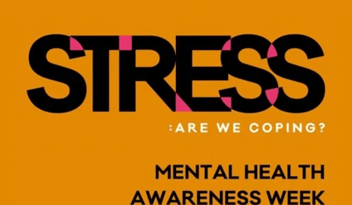Top 5 Marketing Trends for 2018
By Burn •
- 2018
It’s January 2nd 2018 and for most of us, this marks the first day back at work (side note: where did 2017 go?). This time of year is characterised by looking forward at the year ahead, so a natural place for me to kick-off Burn’s blog for this year was predicting the Top 5 Marketing Trends for 2018. Here goes…
-
AI (Artificial Intelligence)
It makes me feel slightly uneasy, but the long-imagined future of robots replacing people is happening and admittedly, some of it is quite cool.
- Voice searching to replace standard search methods. Whether it’s asking Siri pointless questions or demanding Google Home or Amazon Alexa to play your favourite song, voice search is already extremely popular. By 2020, it’s predicted that 50% percent of all searches will likely be voice searches. Currently, voice searching AI is mainly used as a personal assistant. Some believe that as more and more enter the home, paid content will be become increasingly prominent e.g. ‘What’s the best Italian restaurant near me?’ *Insert Italian restaurant ad*.
- Product placement to circumvent ad-blocking technology. According to the New York Times, approximately 11% of internet users globally use ad blockers to reduce their exposure to the constant onslaught of advertising, this translates to more than 600 million devices and is only set to rise. Using AI, logos and products can be personalised and placed within content. For example, if you were researching which new car to purchase, then watched an episode (or two) of your favourite Netflix series as a break, the same model of car could be driven by one of the characters.
- Chat-bots further integrated into customer service teams. High-quality customer service is an important part of any brand’s CRM (Customer Relationship Management). Already prevalent, chat-bots are unfortunately cheaper than a human employee and provide an instant response 24/7 that tackles the much-disliked ‘hold’ time. That said, I do think the value of human-to-human interaction should not be under-estimated. Whether the chat-bots simply aren’t there yet, currently, I would much rather speak to a person than a robot when calling up customer service.
-
Influencers will become integrated into mainstream marketing-strategy
As per my dissertation’s prediction (phew), influencers (i.e. individuals with a significant audience who can be influenced to purchase) are becoming ever more popular in brand partnerships. Regardless of the platform, whether it be Instagram, YouTube or Snapchat, influencers are a powerful tool worth harnessing. According to Inc., businesses can generate $6.50 for every $1 invested in influencer marketing, but why is influencer marketing so successful from a consumer’s perspective? Whilst influencer sensations can induce a celebrity-like idolisation that a younger audience want to feel a part of, I believe their differentiator in the marketing sphere is that the promotion of a brand feels more authentic to the consumer than traditional advertising, despite most being aware that the influencer is being paid.
-
A shift towards brand transparency
Following on from the above, an illusion of, or genuine, brand transparency, is now crucial. Thanks to constant internet access, reading reviews is now part of the buying process. Brands that fail to acknowledge this do so at their peril. Personally, if a brand admits it’s not perfect, I’m much more likely to believe what they say is good about something, rather than sweeping it all aside as one promotional lie. A brand is built by people, neither of which can be perfect. Show it. I strongly believe this humanisation and honesty will cultivate brand awareness, trust and loyalty.
-
Video will continue to sky-rocket
It’s already everywhere, but the use of video content is set to continue growing rapidly. Most brands have found that carefully considered, on-brand videos are an effective way of engaging with their target audience, especially due to the hyper-connectivity of smartphones.
-
Augmented Reality
As our mobile devices become ever more powerful and integrated into our day-to-day lives, existing apps like Snapchat and Instagram facial filters, Pokémon Go and IKEA Place (where you can virtually place furniture in a room using your phone’s camera) are likely to take off in a big way. Overall, I believe that the future of marketing is contextual. Traditional ‘salesy’ advertising innately distracts from the present and is now rarely taken in due to over-exposure. In my opinion, the future of successful marketing campaigns belongs to transparent brands who weave their marketing campaigns into what we are already doing and thinking. One recent example is Tesla, who spent 1/90th of the advertising budget of Mercedes Benz, and outsold them by 3x. How? Mercedes Benz was pushing people to buy their cars, whereas Tesla was engaging in a dialogue about living fossil fuel free. A break-through that drove 400,000 pre-orders without the need for traditional advertising.


